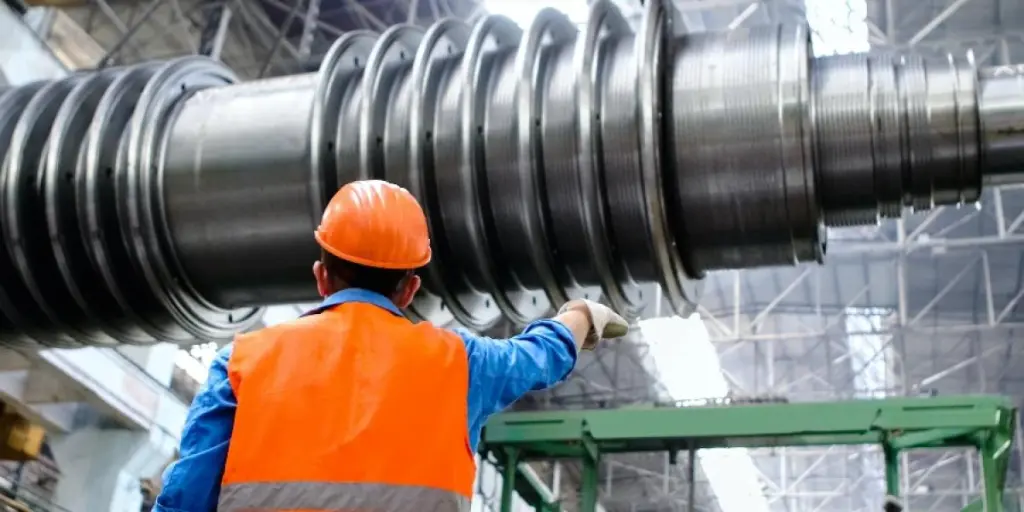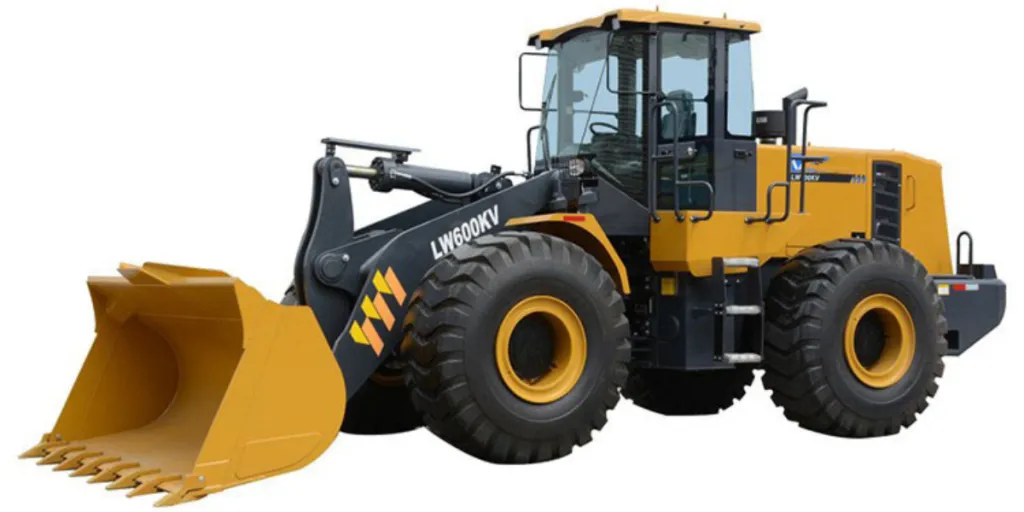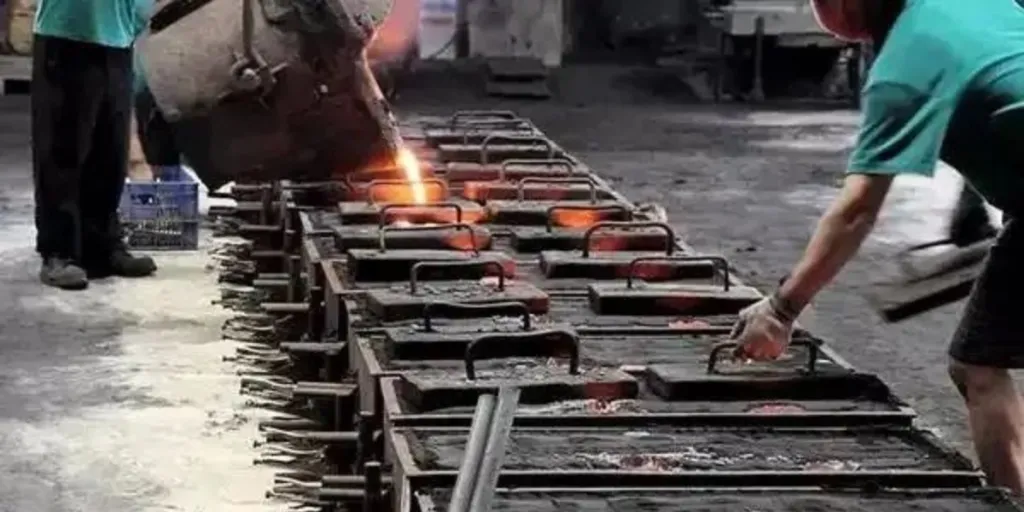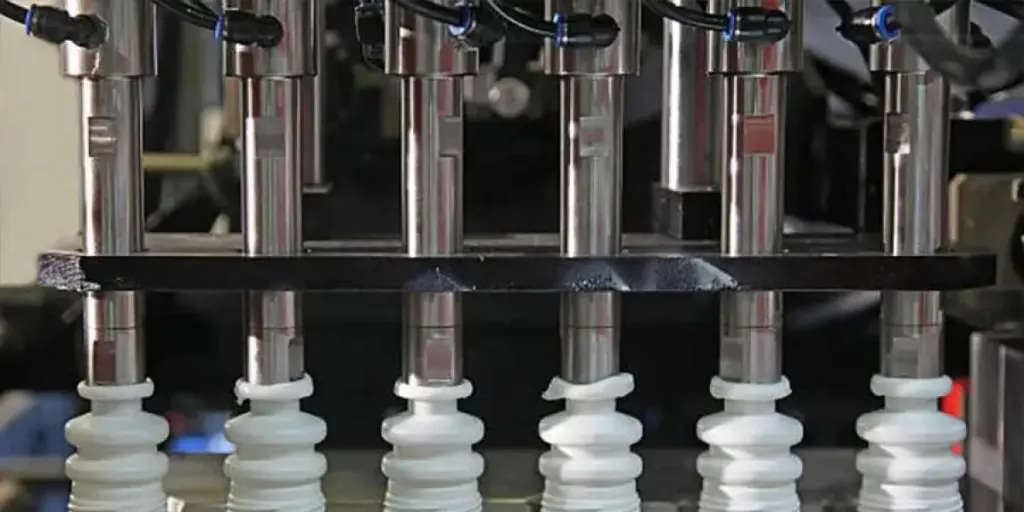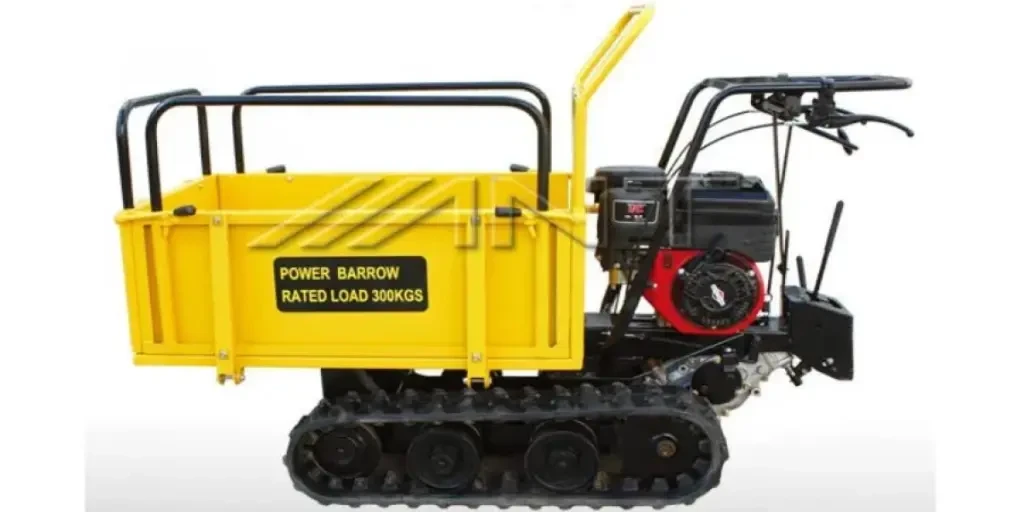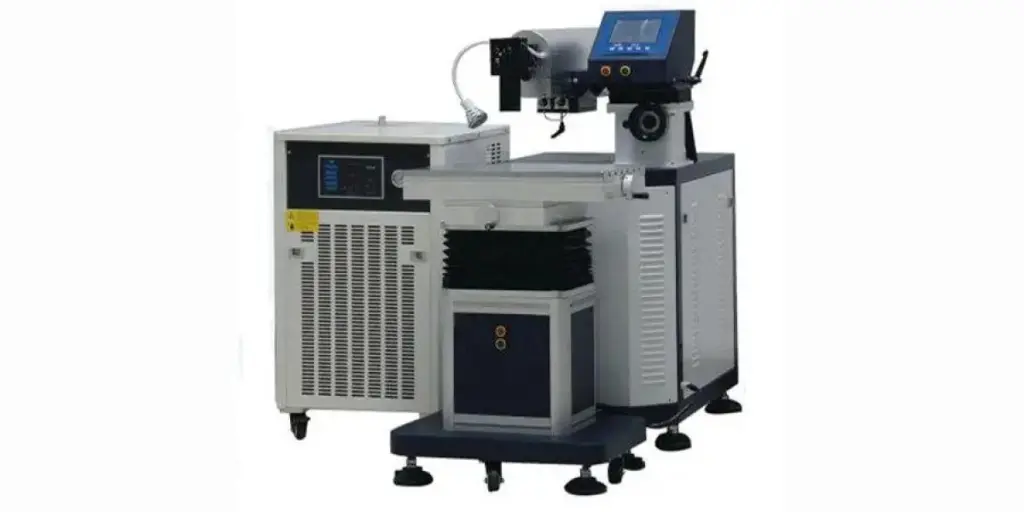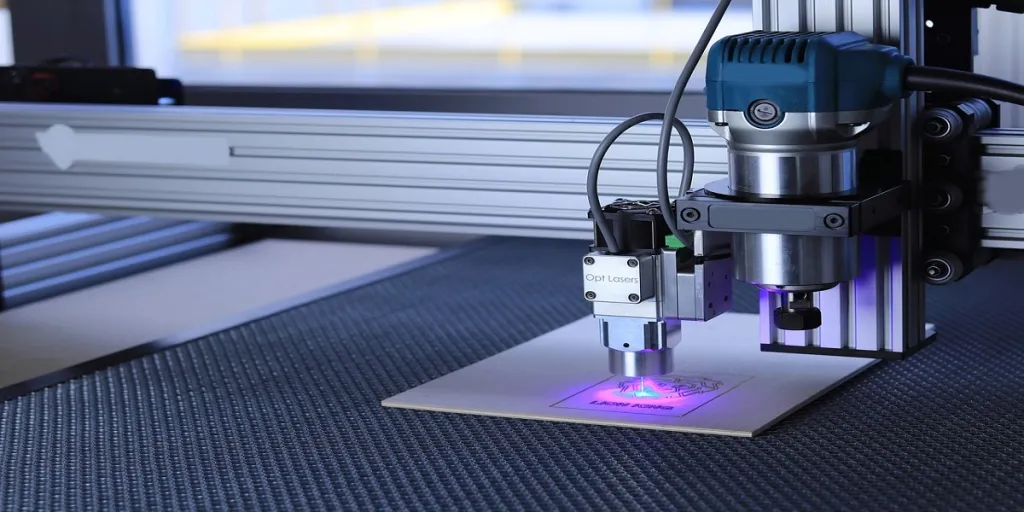Farm irrigation systems are used to artificially provide water to agricultural crops. Many farmers use farm irrigation systems to ensure their crops have access to sufficient water, which is essential for growth and productivity. There are different types of farm irrigation systems, including surface irrigation, sprinkler irrigation, and drip irrigation. Before buying any farm irrigation system, it is important to consider some essential factors including, but not limited to, cost and durability.
In this article, we will offer a brief overview of the market for farm irrigation systems, before discussing the different types of farm irrigation systems available in the market right now and how to select the ideal ones.
Table of Contents
Overview of the farm irrigation systems market
Types of farm irrigation systems
How to select ideal farm irrigation systems
Summary
Overview of the farm irrigation systems market

The agricultural irrigation systems market is segmented based on the type, applications, crop type, and region. These segments are further classified into sprinkler irrigation systems, surface and subsurface irrigation systems, and micro-irrigation systems. The market size has rapidly increased over the years due to the growing demand for food. It has also been driven by the rising scarcity of water across the globe.
According to Fior Markets, the global farm irrigation systems market was valued at USD 4.73 billion in 2019. While expanding at a compound annual growth rate (CAGR) of 8.64%, the market size is expected to reach USD 9.18 billion by 2027. This surge in the demand for farm irrigation systems is ascribed to the expansion of agricultural activities across the world. The agricultural industry is estimated to consume around 60% of the water resources available.
Considering the crop type segments, orchard crops registered a market share of about 34.49% which equalled USD 1.68 billion. The large and corporate farming segment had a 32.71% market share valued at USD 1.55 billion. Regionally, Asia Pacific held the largest market share (49.12%) which was valued at USD 2.33 billion in 2018. The other major regions included Europe, North America, China, Latin America, and Japan.
Types of farm irrigation systems
1. Drip irrigation systems

In drip irrigation, water is moved under pressure through pipes to the farm. The water slowly drips onto the soil through drippers or emitters that are positioned close to the crops. Usually, the immediate roots of the plants are supplied with water. This process is also called trickle irrigation.
Pros
- This method has less or no evaporation, waste, or run off thus saving huge amounts of water
- The process protects the crops due to the absence of leaching
- This system is less dependent on the weather and thus offers great stability in farming
- It saves energy because it works under low pressure
Cons
- The process requires a high initial investment which is expensive
- Frequent sunny weather conditions can reduce the usable life of tubes for drip irrigation
- Chances of clogging when the water is not properly filtered
2. Surface irrigation systems
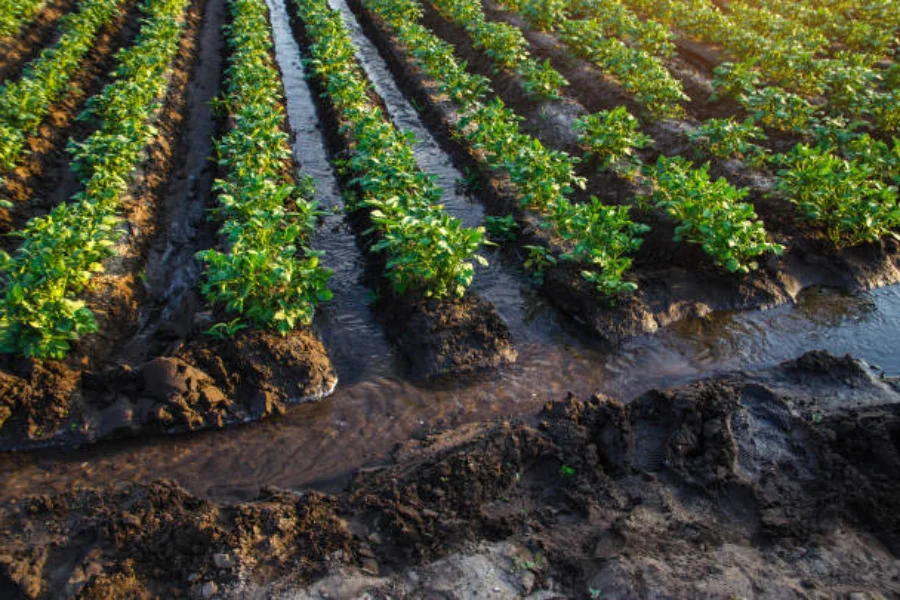
Surface irrigation applies water to the surface of the farm by gravity. Under this irrigation system, the entire farm is flooded, water is moved through small channels called furrows or strips of land. There are three categories of surface irrigation: basin, furrow, and border irrigation.
Water moves down the slope of the land in furrows as it infiltrates into the soil. The crops are grown on the ridges between the furrows. Basins are basically flat areas of land that are surrounded by low bunds. The bunds hold the water in and prevent it from flowing to the adjacent farms. Lastly, borders are sloping and long strips of land divided by bunds. Water is fed into the border using siphons or outlets and wets the soil as it flows down the border slope.
Pros
- The methods are easily manageable and do not need any modern technology
- Small land can be irrigated using these methods because they do not require high financial support
- Rainwater can be utilized too because they are nature-friendly processes
- These irrigation systems work effectively in low filtration rates
Cons
- They cannot be used on level lands as they require high accuracy
- The methods cannot be applied to soils with high filtration rates
- Limited land spaces might get more water than required
3. Sprinkler irrigation system
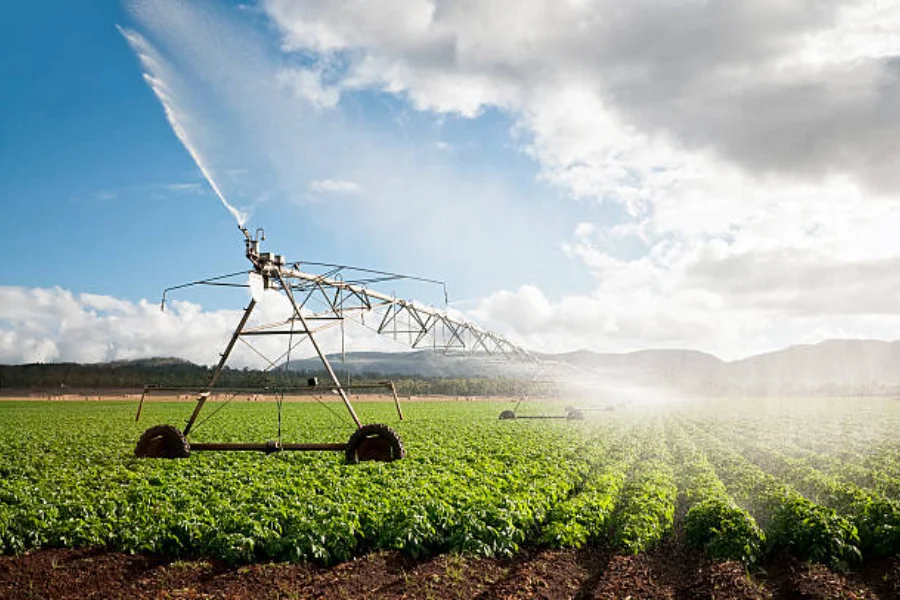
A sprinkler irrigation system involves water being pumped via a pipe system. The water is then sprayed onto the plants using rotating sprinkler heads. This system resembles natural rainfall. However, the water supply system, operating conditions, and sprinklers should be designed to apply water uniformly.
Pros
- The center pivot systems can be programmed to apply water and stop at specified times and angles
- Sprinklers are efficient on medium to coarse-textured soils
- The equipment used is affordable and easy to set up
- Water distribution will always be equal depending on the settings
Cons
- Require frequent water application to recharge soil depleted by crops
- In the case of unfiltered water, the sprinkler nozzles clog
- Result in scalding on crop foliage
How to select ideal farm irrigation systems
1. Cost
Cost involves the initial cost of purchasing and setting up the irrigation equipment and the expenses incurred in moving water from the source. There will be variations in cost depending on the size and shape of the farm. Buyers who have more land will require more materials to ensure the entire space is reached when watering. Irregularly shaped fields increase the cost of irrigation as well. Additional costs come in when there is a need for booster pumps to move the irrigation water from the source.
2. Soil type
Generally, the type of soil plays an important part in determining the most appropriate irrigation system. The composition of soil affects the level of water absorption. For instance, sandy soil absorbs less water compared to clay soil. This specific factor helps the buyers know how much water will evaporate or run off. As a result, buyers need to know that clay soils have low infiltration rates and thus could require surface irrigation. Additionally, soils with better infiltration rates require drip or sprinkler irrigation systems.
3. Water availability
This factor contributes to either the success or failure of plant irrigation. Firstly, the location of the water source like lakes or ponds as opposed to boreholes will determine the irrigation pump to be used. Secondly, if the water supply is slow due to conservation concerns, then the irrigation system selected should ensure less wastage of water. In addition, the water available from various sources should be checked to ascertain whether they have chemicals or minerals. This is meant to prevent crop damage if the water is sprayed directly.
4. Power source
The power source determines how the irrigation water moves from the water source to the crops being irrigated. Some irrigation systems like surface irrigation will mostly require the force of gravity to move the water into the basins, furrows and borders. However, other methods which move irrigation water through pipes and spray it to reach the crops require additional power. Buyers need to tap into various sources of power that are economical in pumping the irrigation water. For instance, solar energy, windmills, fuel and electric pumps. Notably, a three-phase electrical power supply is the most economical source of irrigation power for large-scale farming. This is due to the lower cost requirement for daily energy, maintenance, controls, and equipment.
5. Crops planted
Notably, any type of irrigation system has to be selected based on the kind of crops being planted and their specific water requirements. Buyers will also need to understand the needs of the soil to determine the suitable irrigation system for the crops planted on that soil. This is important as it prevents the negative effects of irrigation on plants like burning, poor growth, and root issues. For instance, sprinkler irrigation systems sometimes result in the scalding of plant foliage.
6. Field size and shape
Considering farm sizes, there are small, medium, and large-scale farming. Buyers who are small-scale farmers should take up climate-smart irrigation solutions. This will make them more resilient, self-sufficient, and independent in farm irrigation. For instance, drip irrigation could be suitable for small-scale farming because it conserves water. On the other hand, surface irrigation can be used on medium to large pieces of land. It is also widely used in various land topographies and can irrigate irregular shapes of fields.
Summary
In agriculture, adequate water supply is crucial for plant growth. The additional water from various irrigation systems comes in handy when rainfall is not sufficient. Buyers need to understand the different methods used to supply irrigation water to the crops. Evidently, from the above guide, each method has advantages and disadvantages which determine its suitability. The required equipment used in the above mentioned irrigation systems can be found on Alibaba.com.

